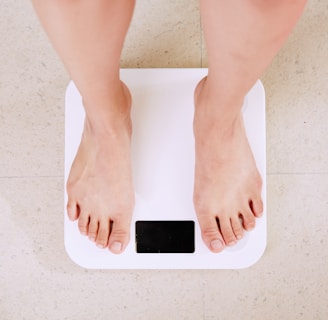Weight Loss vs. Fat Loss: Why the Scale Doesn't Tell the Whole Story
For many, the ultimate fitness goal is simply to "lose weight." We step on the scale, hoping to see that number drop. But what if I told you that focusing solely on "weight loss" might be misleading you and even hindering your true progress?
At J.T.S. Fitness, we want to help you understand a crucial distinction: the difference between weight loss and fat loss. And trust me, it's a game-changer for how you approach your fitness journey.
What is "Weight Loss"?
When the number on the scale goes down, that's "weight loss." It sounds straightforward, right? But here's the catch: your body weight is made up of many things:
Water (which can fluctuate daily based on hydration, salt intake, hormones, etc.)
Muscle mass (which we ideally want to keep or even gain!)
Bone mass
Organ mass
Body fat
So, when the scale drops, it could be due to a decrease in any of these components. If you're losing a lot of water or, worse, muscle mass, that's not necessarily beneficial for your long-term health or your appearance.






What is "Fat Loss"?
Fat loss specifically refers to the reduction of stored body fat. This is where the magic happens for real, sustainable body transformation and improved health. When you lose fat, you typically:
Look leaner and more toned.
Improve your body composition.
Reduce your risk of various health issues associated with excess body fat (like heart disease, diabetes, etc.).
Increase your metabolism, as muscle is more metabolically active than fat.
Feel better and have more energy.
Why You Should Focus on Fat Loss, Not Just Weight Loss
Imagine two people who both "lose 10 pounds."
Person A achieves this by drastically cutting calories and doing excessive cardio. They lose 5 pounds of fat, 3 pounds of water, and 2 pounds of muscle. They might feel weaker and still look "skinny fat."
Person B achieves this by eating adequate protein, lifting weights, and being consistently active. They lose 8 pounds of fat and 2 pounds of water, while maintaining or even gaining a little muscle. They look more toned, feel stronger, and have more energy.
Both lost "weight," but Person B achieved true fat loss and is in a much better place for long-term health and maintaining their results.
How to Prioritize Fat Loss for Sustainable Results
At J.T.S. Fitness, my personalized coaching focuses on helping you achieve effective fat loss by emphasizing:
Strength Training: Building and preserving muscle mass is crucial for boosting your metabolism and shaping your body.
Empowering Nutrition: Understanding your macronutrients (protein, carbs, healthy fats) and fueling your body properly means you're eating for satiety, energy, and fat burning, not deprivation.
Consistent Activity: Beyond just workouts, incorporating more daily movement helps contribute to overall calorie expenditure and fat loss.
Prioritizing Protein: Protein is key for muscle preservation and feeling full, which naturally aids fat loss.
Tracking Beyond the Scale: We'll look at progress in terms of how your clothes fit, your energy levels, strength gains, measurements, and consistent habits – not just the number on the scale.
Don't let the scale dictate your success! Shift your focus to sustainable fat loss, and you'll not only see the physical changes you desire but also gain lasting health, confidence, and energy.


